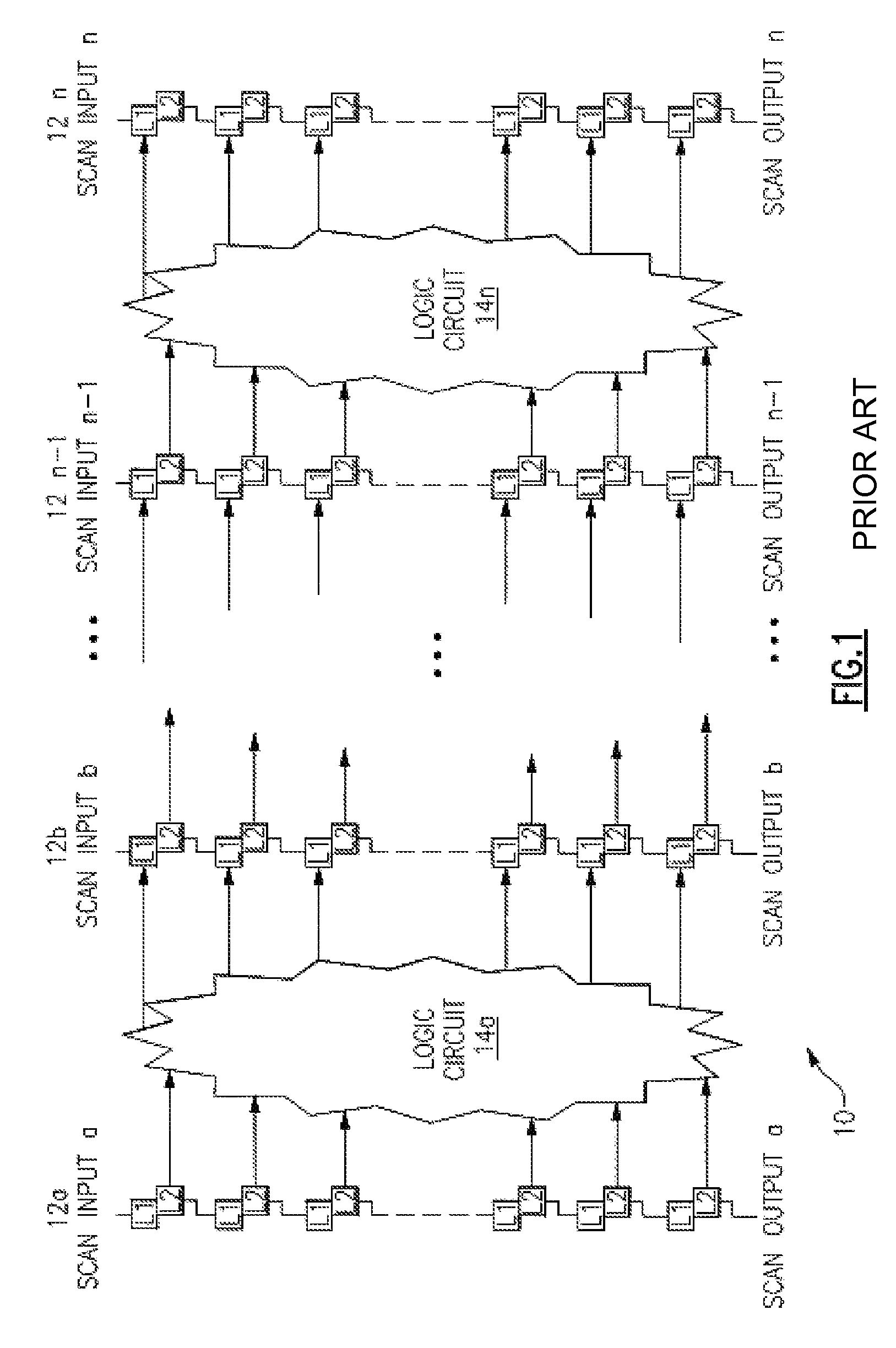Method and apparatus for selective scan chain diagnostics
a scan chain and diagnostic method technology, applied in the direction of instruments, measurement devices, computing, etc., can solve the problem that human error is often part of misdiagnosis of parts, and achieve the effect of significantly reducing the time required to diagnose parts
- Summary
- Abstract
- Description
- Claims
- Application Information
AI Technical Summary
Benefits of technology
Problems solved by technology
Method used
Image
Examples
Embodiment Construction
[0018]FIG. 1 is a schematic diagram of an example chip 10 which may be diagnosed with the present invention. The chip 10 is designed in a Level Sensitive Scan Design (LSSD), which includes scan chains 12a–12n which provide access to internal logic circuits 14a–14n in the chip 10. The scan chains 12 can be configured as one long chain or multiple short chains. As is known, data may be entered into a scan chain 12 at the input of the chain (WRPIN), and the data may be read at the output (WRPOUT) of the chain 12 to test the integrity of the chain, and to detect errors.
[0019]FIG. 2 is a schematic diagram of a scan chain 12 and is composed on a number of L1 / L2 shift register latch (SRL) pairs 20. As shown in FIG. 3, each SRL pair 20 consists of an L1 latch 31 connected to an L2 latch 32. When the A clock input of the L1 latch 31 is pulsed, the data at the SCAN port is captured and stored in the latch 31. Similarly, when the B or C2 clock inputs of the L2 latch is pulsed, the data from th...
PUM
 Login to View More
Login to View More Abstract
Description
Claims
Application Information
 Login to View More
Login to View More - R&D
- Intellectual Property
- Life Sciences
- Materials
- Tech Scout
- Unparalleled Data Quality
- Higher Quality Content
- 60% Fewer Hallucinations
Browse by: Latest US Patents, China's latest patents, Technical Efficacy Thesaurus, Application Domain, Technology Topic, Popular Technical Reports.
© 2025 PatSnap. All rights reserved.Legal|Privacy policy|Modern Slavery Act Transparency Statement|Sitemap|About US| Contact US: help@patsnap.com



